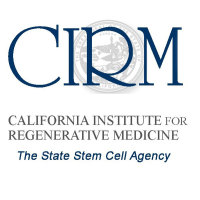New Job for Ex-Stem Cell Board Leader Reignites Charges of Cronyism

When Alan Trounson announced he was quitting his job as president and CEO of the California Institute for Regenerative Medicine (CIRM), the official release said he was leaving to spend more time with his family in Australia.
It was a short reunion. Within a week of his June 30 departure, he joined the board of StemCells, Inc, a recipient of $19.4 million from CIRM for Alzheimer's research. Los Angeles Times columnist Michael Hiltzik seized upon the occasion to review the program's history of cronyism allegations that have been prevalent since voters established CIRM at the ballot box in 2004 and seeded it with $3 billion.
Proposition 71 was overwhelmingly passed in response to the Bush administration's freezing of stem cell research, while citing moral objections to the destruction of human embryos in some of the processes. Bush restricted federal funding of research to a handful of human embryonic stem cell lines, already created, halting research into treatments for a range of problems, including Parkinson's, Alzheimer's, diabetes, nervous system therapies and leukemia.
The program funds basic research, making it difficult for the layperson to judge its success. But the American Journal for Public Health wrote in 2010 that the program was fulfilling its mission by establishing research priorities, creating ethical standards, making it possible for academic researchers to work together with private enterprise and establishing extensive global collaborations.
CIRM says its funding has “led to more than 1,750 published discoveries . . . trained more than 1,500 high school, college and graduate-level students . . . lured more than 130 senior-level scientists and their labs to California . . . funded 87 therapy-focused awards worth more than $600 million . . . generated $264 million in tax revenues by 2014 . . . and generated 38,000 job-years by 2014.”
Prop. 71 set up a 29-member board of directors, each of whom was required to have a California connection to stem cells via academia, a private company, a public institution or an advocacy group. More than 80% of grants ended up going to institutions represented on the board. Stanford led the way with 88 grants totaling $275.4 million, followed by four University of California schools and the University of Southern California. StemCells, Inc. is 20th on the list.
An independent review of CIRM by the Institute of Medicine of the National Academies echoed a critical 2009 review by the independent Little Hoover Commission, which was asked by agitated members of the state Legislature to “recommend ways to strengthen its governance structure, improve accountability and reduce conflict of interest.”
Both reports recommend reconfiguring the academia-dominated board by adding independent members with no ties to CIRM-funded entities. Little Hoover suggested lopping off 14 members. Both recommended separating management from the board, and the board from the money. They also recommended staggering the terms of board members and adding some people from the business community.
None of the recommendations were adopted. Little Hoover warned that, “As CIRM matures, these issues take on greater consequence.”
CIRM is not unaware of the conflict-of-interest accusations and acknowledged that Trounson's new job looks fishy. His successor, C. Randall Mills, put out a press release claiming that the board knew nothing in advance about Trounson's new position and promised to investigate. “We take even the appearance of conflicts of interest very seriously,” he wrote.
Hiltzik has been writing about the board's perceived conflicts for years. He wrote about StemCells Inc. landing its $20 million in 2012 and more recently about how its co-founder, Irving Weissman, is listed as the principal on four grants to Stanford totaling $35 million. Weissman was featured in ads for Prop. 71 during the campaign to get it passed.
The California Stem Cell Report has provided a steady diet of conflict-of-interest stories and revisited a few of the issues in February. It started by reaching back to 2007 when applications from 10 researchers for $31 million was voided because of violations by five board members. The story also mentioned the board's support for StemCells, Inc.'s original effort to land $40 million in grants, although grant reviewers had already rejected one of the two $20 million applications.
The original $3 billion voters provided CIRM is expected to be gone by 2017 and word is already circulating that the program's original sponsor and first president, Robert Klein, would like to see a $5-billion infusion of cash from voters via another ballot measure in 2016.
The problems addressed by stem cell research are serious and the cause of promoting research in light of federal resistance is worthy. But assessment of CIRM's success is difficult. The public was given the impression in 2004 that funding CIRM would bring almost immediate breakthroughs in the treatment of serious maladies.
Basic research of the type supported by CIRM doesn't work that way, but supporters will have a harder time explaining that to a skeptical public in 2016 if a cloud of cronyism still hangs over the program.
–Ken Broder
To Learn More:
Conflicts of Interest Pervasive on California Stem Cell Board (by Michael Hiltzik, Los Angeles Times)
San Francisco Business Times: California's Trounson Affair Damages Likelihood of Future Stem Cell Funding (California Stem Cell Report)
Stem Cell Agency Acts to Prevent “Potential Conflict of Interest” (by Stephanie M. Lee, San Francisco Chronicle)
Independent Report Sounds a Familiar Call for Change at Stem Cell Agency (by Ken Broder, AllGov California)
- Top Stories
- Controversies
- Where is the Money Going?
- California and the Nation
- Appointments and Resignations
- Unusual News
- Latest News
- California Forbids U.S. Immigration Agents from Pretending to be Police
- California Lawmakers Urged to Strip “Self-Dealing” Tax Board of Its Duties
- Big Oil’s Grip on California
- Santa Cruz Police See Homeland Security Betrayal in Use of Gang Roundup as Cover for Immigration Raid
- Oil Companies Face Deadline to Stop Polluting California Groundwater





